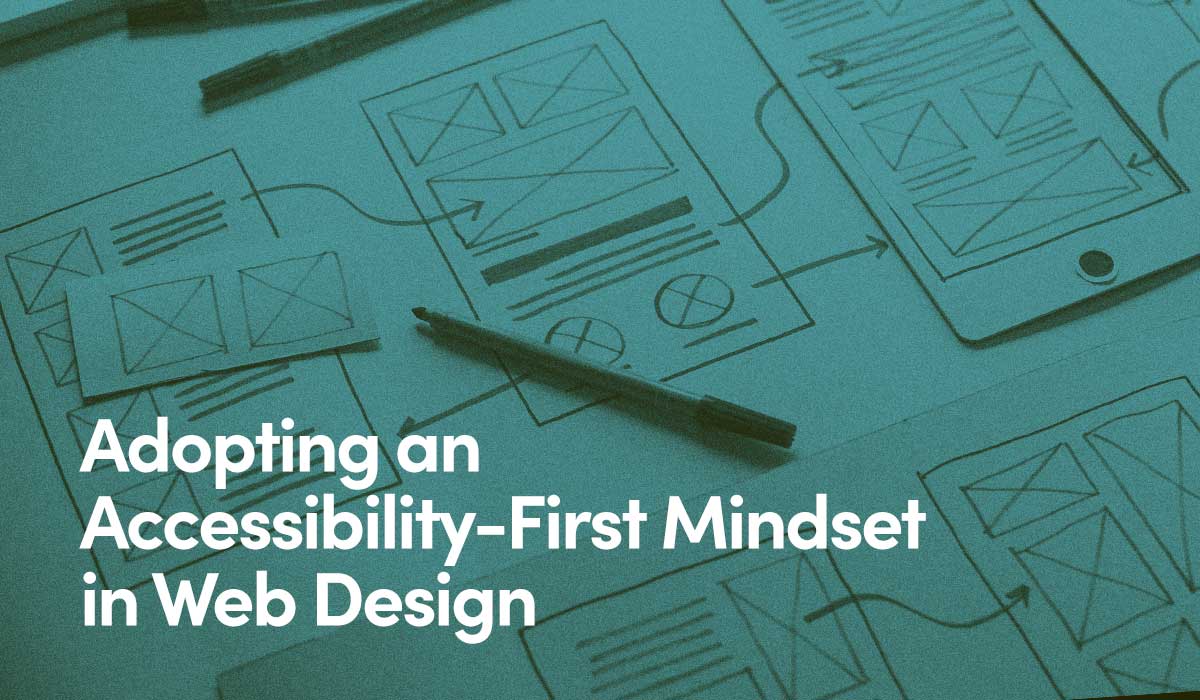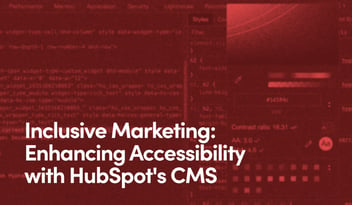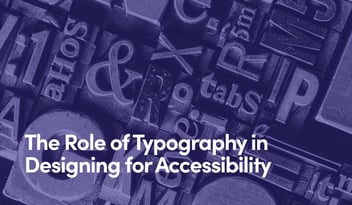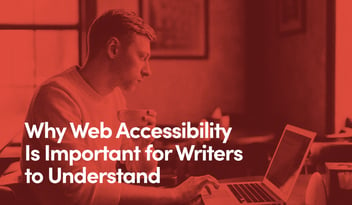Adopting an Accessibility-First Mindset in Web Design

One billion people, 15% of the world’s population, live with a serious disability, and far too often, are forced to navigate a world without them in mind.
Yet disability is an inherent aspect of the human experience, and just as physical enhancements to buildings and transportation, for example, were critical in enabling access to many key elements of society, so too are improvements to the accessibility of websites and other digital assets absolutely vital.
An important part of helping to achieve this is to include accessibility—aka a11y—as a fundamental aspect of every facet of the inclusive design process—from concept and development through testing, implementation, and ongoing maintenance.
Ultimately, an a11y-first mindset means prioritizing equity and empathy, and considering all end users.
Let’s examine the importance of accessible web design and incorporating such elements throughout the entire process.
What Is Accessible Web Design?
Web accessibility involves utilizing universal design principles to ensure digital products, devices, services, and platforms can be used by people with various disabilities or impairments.
Importantly, everyone should have equal access to the digital ecosystem, no matter their particular disabilities or conditions. This includes members of the blind and low-vision, d/Deaf, and neurodivergent communities, among many others.
Inclusive design eliminates exclusionary elements that may prohibit specific users from utilizing websites and other digital features, as well as enjoying the products and services offered. It facilitates a positive user experience, for all.
Some basic considerations to keep in mind when designing for accessibility include ensuring:
- Sufficient contrast between backgrounds and foregrounds
- Interactive elements are easily identifiable
- Clear labels on form elements
- Designs for various viewports are clearly legible and readable
- Consistent styling and positioning across navigation bars
Including people with disabilities from the outset and involving them in actually testing digital products and services is an important part of this. So is adopting an a11y-first mindset and incorporating accessible features and strategies.
Integrating Accessibility Throughout the Design Process
Accessibility is not an add-on, and there is no perfect fix that will facilitate an accessible experience for all your end users.
Overlays, a popular choice for many seeking to retrofit their digital presence, create additional barriers for those utilizing screen readers and other assistive technologies, as these force specific interactions. Rather, designers should prioritize accessibility during every stage of a project.
Here are several important tips and resources to help you improve web design accessibility:
1. Conduct Research & Learn From Experts
Before beginning a project, conduct research on accessibility best practices and guidelines. Be aware of technical considerations regarding alt tags, keyboard navigation, and appropriate contrast ratios.
The following resources provide valuable guidance:
- Web Content Accessibility Guidelines (WCAG) are an internationally recognized web a11y framework for accessible digital content.
- Inclusive Design Principles by Microsoft provide guidance on designing inclusive products and services.
- Accessible Design at IBM covers design, development, and testing, as well as free accessibility training for designers and developers.
- The A11Y Project: This open-source initiative provides a collection of accessibility resources and tools for developers and designers, as well as a checklist to help ensure accessibility.
2. Utilize Design Tools to Ensure Compliance as You Go
Ensure all design elements contain alt text, appropriate color contrast, adequate links, and more, so screen readers, refreshable braille displays, and screen magnifiers have equal access.
Some of our favorite tools include:
- WAVE by WebAIM and axe DevTools® for holistic accessibility testing in the browser
- WebAIM, Polypane, and this a11y validator for ensuring sufficient color contrast
- Text on Background Checker for comparing text contrast against an image background
- Screaming Frog for inputting missing alt text
- Image & Link Analyzer for scanning all links and media on a webpage
3. Involve Users With Disabilities Throughout the Design Process
“Nothing about us without us,” a popular slogan within the disability rights and accessibility advocacy movement, should be a motto for a11y-first design, as well.
Throughout every stage of a project, consider the needs of all your end users, whether through focus groups, user testing, or feedback sessions.
4. Refine, Refine, Refine
Don’t make assumptions. Guidelines change and user experiences may be completely different from what you had envisioned or what research indicated.
Keep a humble attitude and refine your designs as needed to ensure you’re creating the best possible experience for all involved.
It’s About Equity & Empathy
“Everyone can use this” is different from “We built this with you in mind.” People don’t want to use products where they are tolerated; they want to go where they are included. An a11y-first mindset considers all users, not only at the end of a project, but during its entirety, to create a fully inclusive product.
Beyond a retroactive add-on or compliance requirement, accessible web design ensures the full spectrum of people can access and create web content.
Disability is inherent to the human experience, and ensuring digital accessibility in design is the first step toward achieving a more accessible and inclusive web, for all.



